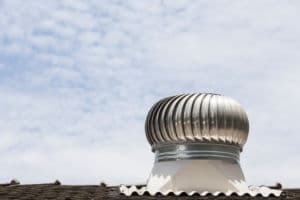
Improve Air Circulation for a Cooler Summer, Naturally
Proper air circulation is crucial in any home, because airflow regulates temperature, removes impurities, prevents mold, and just creates a more pleasant and safe breathing environment. By contrast, poor air circulation can actually endanger your health. When your home’s air seems stagnant, or its air circulation otherwise leaves something to be desired, take steps to get breezes flowing again for a healthier, more comfortable home.
How to Improve Air Circulation
Open doors and windows
This is the most simple and obvious way to immediately improve indoor air circulation. By simply opening windows in different rooms, you can create a cross-flow that improves the circulation of the entire house.
When air flows into a room from one side and out the other, you’ve got cross ventilation. As with any air movement, cross ventilation can cool your body by speeding up the evaporation of sweat, and it can cool your home by removing hot air, especially at night, if the incoming outdoor air is cool.
Any room with openings on opposite sides can be cross-ventilated if the openings are large enough. But most homes are at least two rooms deep in many places, so you also need to look at airflow through the whole house in order to ventilate the rooms effectively. Think of your house as a system of corridors and doorways that can channel air from one end to the other.

Run fans
In addition to the exhaust fans that improve your overall air, traditional fans can ensure that the air continues to circulate. Window fans are especially useful for this purpose.
An exhaust fan works sort of like a traditional fan in reverse. Rather than blowing air outward, it draws air and moisture inward. This improves outdoor ventilation, prevents humidity from taking over your house, and removes contaminants from the air.
People tolerate higher temperatures when air is in motion, and ceiling fans are a relatively energy-efficient, affordable way to enhance your house’s natural airflow. For example, ceiling fans allow you to raise your home’s temperature during the summer months by four degrees and still enjoy the same comfort level. Here are some pointers to maximize your comfort when using ceiling fans, while minimizing your energy usage:
- Turn off the fan when nobody’s in the room. Air movement cools people, not rooms.
- Adjust the controls seasonally. In summer, use the ceiling fan in the downward (counterclockwise) airflow direction and position yourself in the path of the moving air; the higher the airspeed, the greater the cooling effect. In winter, reverse the motor and operate the ceiling fan in a clockwise direction at low speed to bring warm air near the ceiling down into the occupied space.
Install an attic vent
A lack of attic ventilation can cause stagnant air to become trapped, penetrating the attic floor and affecting the entire house. This job is best left to the professionals, but you can install a gable vent in your attic by first cutting a frame according to the manufacturer’s directions and then mounting the vent with the tools provided. An attic fan can also help improve circulation in the attic.
If you live where breezes are rare, or just a bit too gentle, you can use the “chimney” or “stack” effect to enhance air movement. The chimney effect is driven by the rising of warm air; when air is heated, it expands, becomes lighter, and rises. If that rising warm air is allowed to escape high in a structure, it will be replaced by cooler (heavier) air entering lower in the structure.
The rate of air movement is affected by the vertical distance between inlets and outlets, the size of the openings, and the difference in air temperature from the bottom to the top of the chimney; the greater each of these features, the faster the air movement. One advantage of this strategy is that it doesn’t require any particular orientation to the prevailing breezes; it drives itself.
If you have a tall house — one with multiple levels, high ceilings, or both — you may already have the necessary components for taking advantage of the chimney effect. You can use an existing stairwell, atrium, clerestory, or other vertical air passage to increase airflow in your house. If you already have the necessary openings at the top and bottom of this airspace, your only task may be to open and close them as needed.
Lower Electric Costs in the Summer
Let’s face it: using your air conditioning all summer can be costly. Don’t let the heat break your budget! Use one of our simple suggestions to get the air circulating properly in your home, and your pocketbook will thank you.
Still, looking for a way to cut costs this summer? Switch to Spark Energy to get reliable fixed rates! Learn more about our home energy plans.
Also Read:



